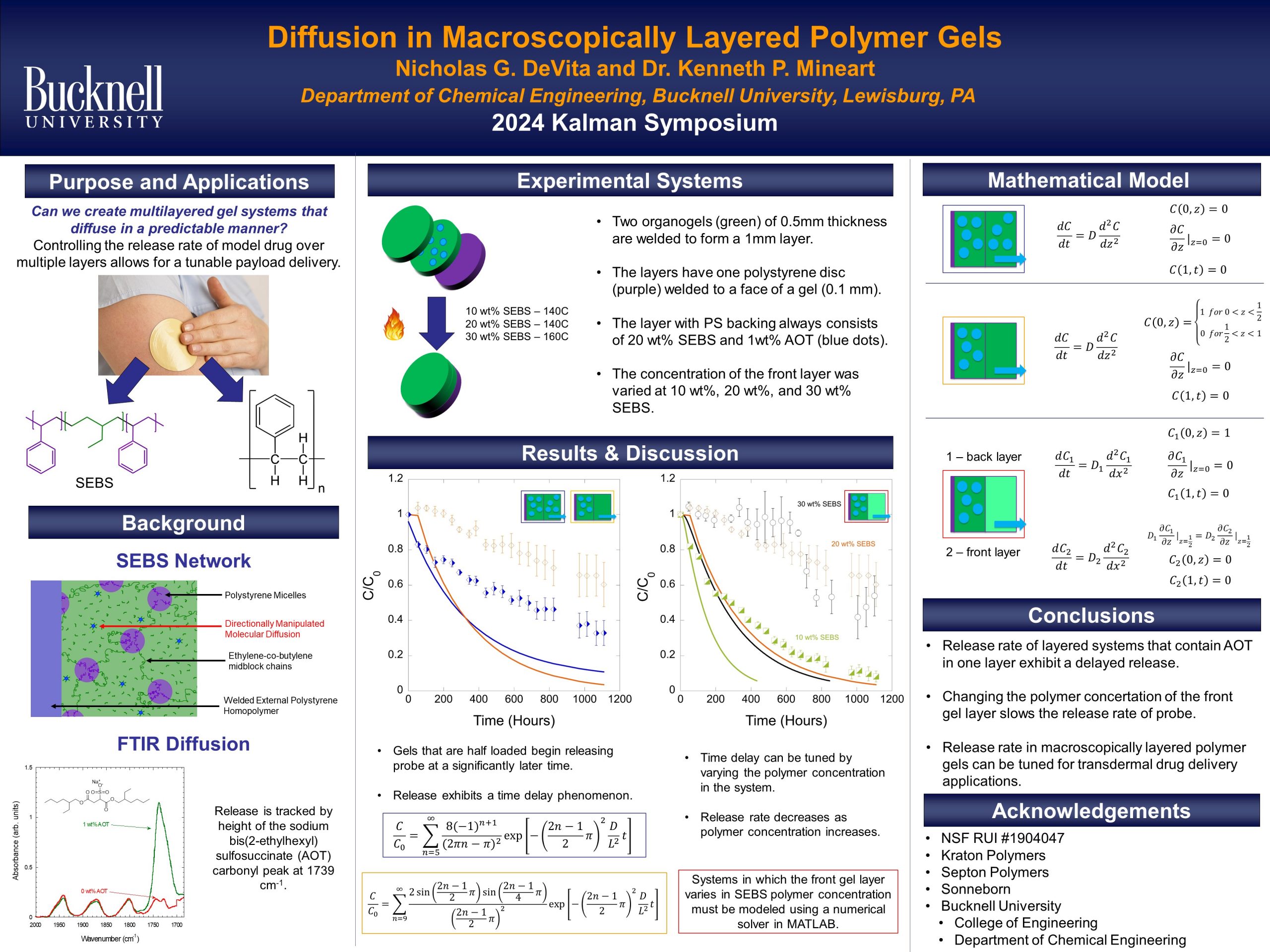
Diffusion in Macroscopically Layered Polymer Gels
Author:
Nick DeVita ’24Co-Authors:
Faculty Mentor(s):
Kenneth P. MineartFunding Source:
Bucknell College of EngineeringAbstract
Transdermal drug delivery is a vital mechanism for skincare, hormone replacement, and other biomedical applications. Organic polymer gels have been recently identified as candidates for this drug delivery mechanism. Our present work focuses on controlling model drug release rate in a layered polymer gel system consisting of multiple organogels and a polystyrene backing. Typically, one organogel contains a diffusion probe [AOT (sodium bis(2-ethylhexyl)sulfosuccinate)], tri-block copolymer, and an organic solvent whereas the other contains only tri-block copolymer and organic solvent. The tri-block copolymer forms a physically crosslinked network within the gels that consists of spherical polystyrene domains and a plasticized rubbery matrix consisting of ethylene-co-butylene and aliphatic mineral oil (organic solvent). The matrix phase is fluid-like and amenable to mass transport, which allows for probe diffusion. Using Fourier Transform Infrared (FTIR) spectroscopy, the overall probe release rate, which stems from this diffusion, can be tracked. In particular, we are interested in the comparison between the aforementioned layered systems and a ‘traditional’ system with a single organogel containing the AOT diffusion probe. We also seek to investigate how changing the tri-block copolymer concentration of the barrier organogel layer – that which contains no AOT – changes the overall diffusion probe release rate. Our measurements show that the release rate of layered systems exhibits a time-delay phenomenon. Furthermore, systems with higher tri-block copolymer concentration in the barrier layer exhibit a longer time delay.